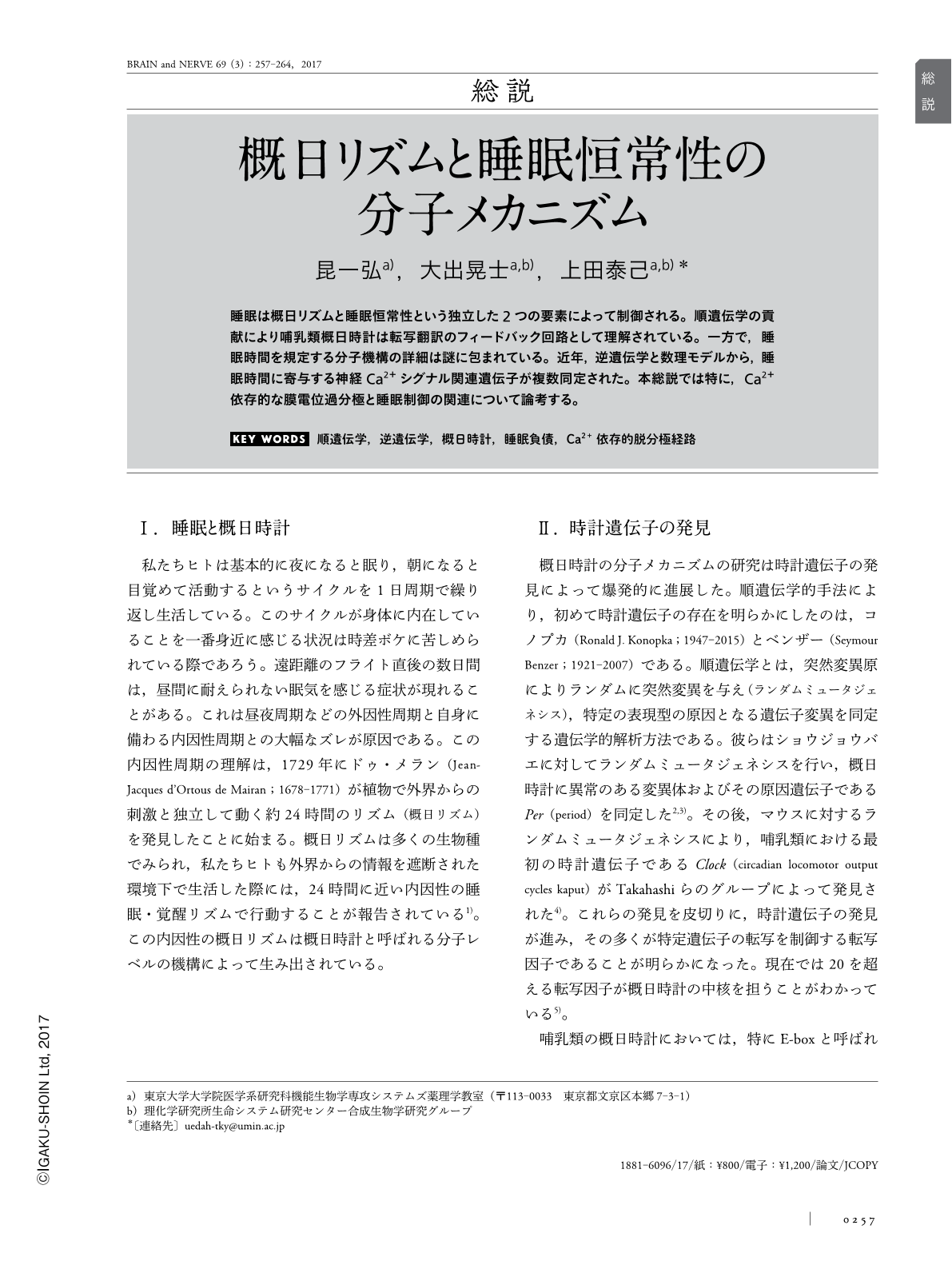Japanese
English
- 有料閲覧
- Abstract 文献概要
- 1ページ目 Look Inside
- 参考文献 Reference
睡眠は概日リズムと睡眠恒常性という独立した2つの要素によって制御される。順遺伝学の貢献により哺乳類概日時計は転写翻訳のフィードバック回路として理解されている。一方で,睡眠時間を規定する分子機構の詳細は謎に包まれている。近年,逆遺伝学と数理モデルから,睡眠時間に寄与する神経Ca2+シグナル関連遺伝子が複数同定された。本総説では特に,Ca2+依存的な膜電位過分極と睡眠制御の関連について論考する。
Abstract
Sleep-wake cycle is controlled by the interplay between circadian rhythm and sleep homeostasis. Genetic studies, through the discovery of mutants with altered sleep-wake behaviors, have explored the molecular components that regulate our daily rhythms. In mammalian circadian clocks, negative-feedback loops composed of a set of transcription activators and inhibitors generate a cell-autonomous oscillation of transcriptional activity. Recent studies further discovered that such transcriptional feedback is controlled through post-translational modifications for the fine-tuning of the oscillation period. Compared to circadian clocks, the canonical molecular model for sleep homeostasis is not established yet. However, recent advances in mammalian forward and reverse genetic studies discovered several genes that regulate sleep duration. Interestingly, these genes include ion channels and kinases, which potentially modify these channels. A part of sleep-related ion channels is involved in Ca2+-dependent hyperpolarization of the neuronal membrane potential. Computational models suggest that the hyperpolarization pathway underlies the firing patterns observed in the cortical pyramidal neurons during sleep. Thus, ion channels controlling the membrane potential of the cortical neurons may be involved in sleep homeostasis.

Copyright © 2017, Igaku-Shoin Ltd. All rights reserved.


